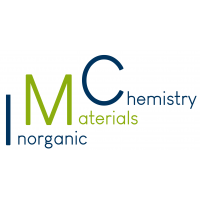A study on the plasma-enhanced atomic layer deposition of amorphous inorganic oxides SiO2 and Al2O3 on polypropylene (PP) was carried out with respect to growth taking place at the interface of the polymer substrate and the thin film employing in situ quartz-crystal microbalance (QCM) experiments. A model layer of spin-coated PP (scPP) was deposited on QCM crystals prior to depositions to allow a transfer of findings from QCM studies to industrially applied PP foil. The influence of precursor choice (trimethylaluminum (TMA) vs [3-(dimethylamino)propyl]-dimethyl aluminum (DMAD)) and of plasma pretreatment on the monitored QCM response was investigated. Furthermore, dyads of SiO2/Al2O3, using different Al precursors for the Al2O3 thin-film deposition, were investigated regarding their barrier performance. Although the growth of SiO2 and Al2O3 from TMA on scPP is significantly hindered if no oxygen plasma pretreatment is applied to the scPP prior to depositions, the DMAD process was found to yield comparable Al2O3 growth directly on scPP similar to that found on a bare QCM crystal. From this, the interface formed between the Al2O3 and the PP substrate is suggested to be different for the two precursors TMA and DMAD due to different growth modes. Furthermore, the residual stress of the thin films influences the barrier properties of SiO2/Al2O3 dyads. Dyads composed of 5 nm Al2O3 (DMAD) + 5 nm SiO2 exhibit an oxygen transmission rate (OTR) of 57.4 cm3 m–2 day–1, which correlates with a barrier improvement factor of 24 against 5 when Al2O3 from TMA is applied.
| Field | Value |
|---|---|
| Publisher | |
| Authors | |
| Release Date | 2020-04-24 |
| Identifier | b99e7866-7f3e-4f52-a378-135127ae5d4a |
| Permanent Identifier (DOI) | |
| Permanent Identifier (URI) | |
| Is supplementing | |
| Plasma Source Name | |
| Plasma Source Application | |
| Plasma Source Specification | |
| Language | English |
| License | |
| Contact Name | Anjana Devi |
| Contact Email | |
| Public Access Level | Public |
| Funding Agency | |
| Project | |
| Subproject |


![[Open Data]](https://assets.okfn.org/images/ok_buttons/od_80x15_blue.png)